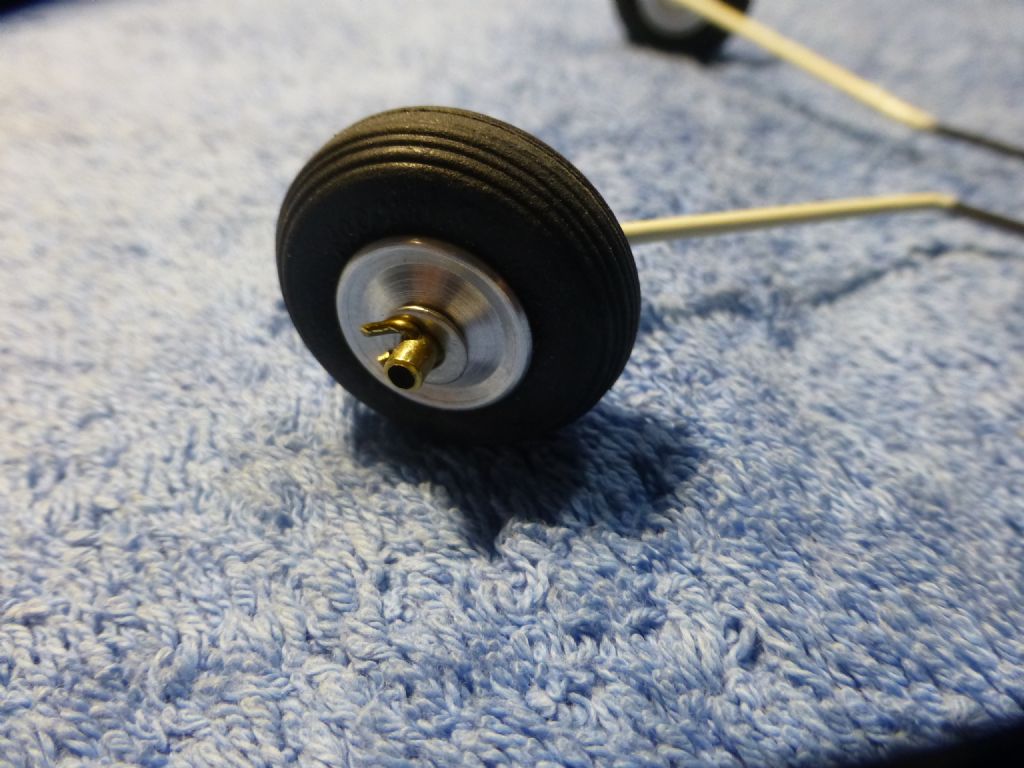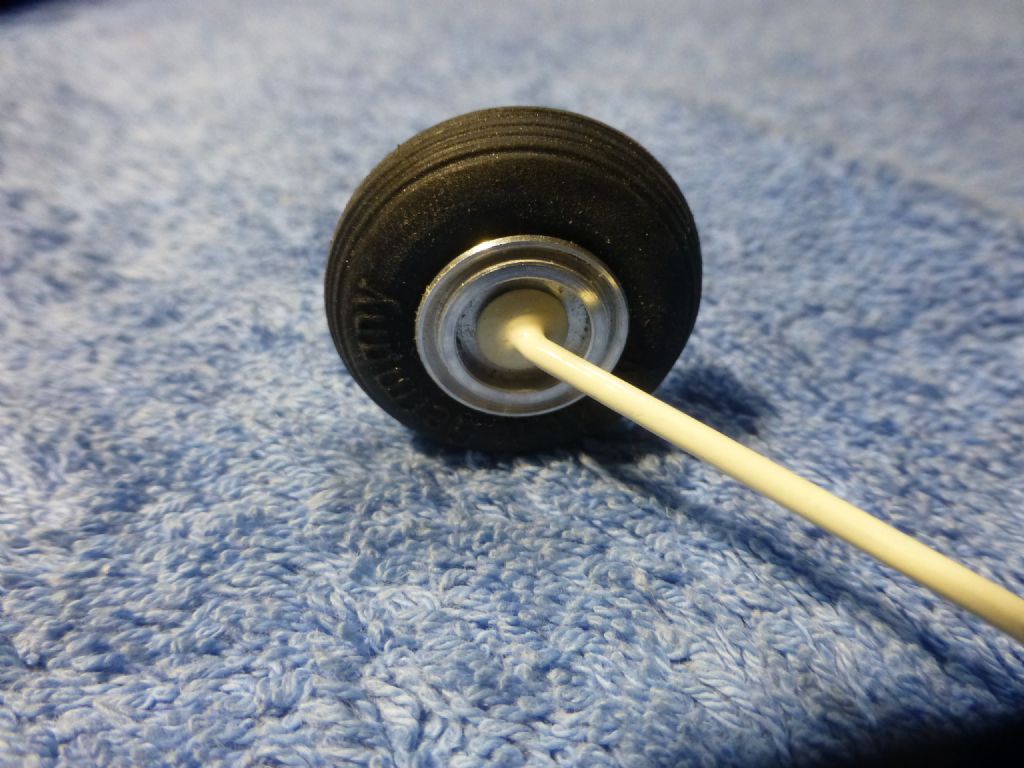I build a lot of model aircraft and here is my solution:


This is a small electric plane but the method scales up.
Brass tube is available that slides over the piano wire for a nice fit either for soft soldering or gluing with epoxy. The tube is the correct length for the hub of the wheel with some extra and the piano wire is cut off level with the outside face of the hub. The brass tube is then cross drilled which obviously is a piece of cake and the wheel retained by a stainless steel washed and in this case because it is a small model, a brass pin. In larger models I would tend to use a stainless steel split pin. If you don't like the bore of the copper tube being visible it can easily be filled.
To stop the inner face of the hub binding on the leg of undercarriage I solder, or in this case epoxy another washer in place and build up the fillet so it looks nice and tidy as well as being well supported.
Usually the hole in the hub needs to be reamed out to fit the bras tube but this provides the opportunity to make a proper bearing fit. Often stock wheels are sloppy on standard wires sizes and chatter when spinning as well as reducing the accuracy of the tracking.
I once tried to thread the end of the piano wire to take a Nylock nut. I did get a thread of sorts but it wasn't pretty and wrecked a perfectly good die. The end result was neat but not really practical.
Tim
Jon.






